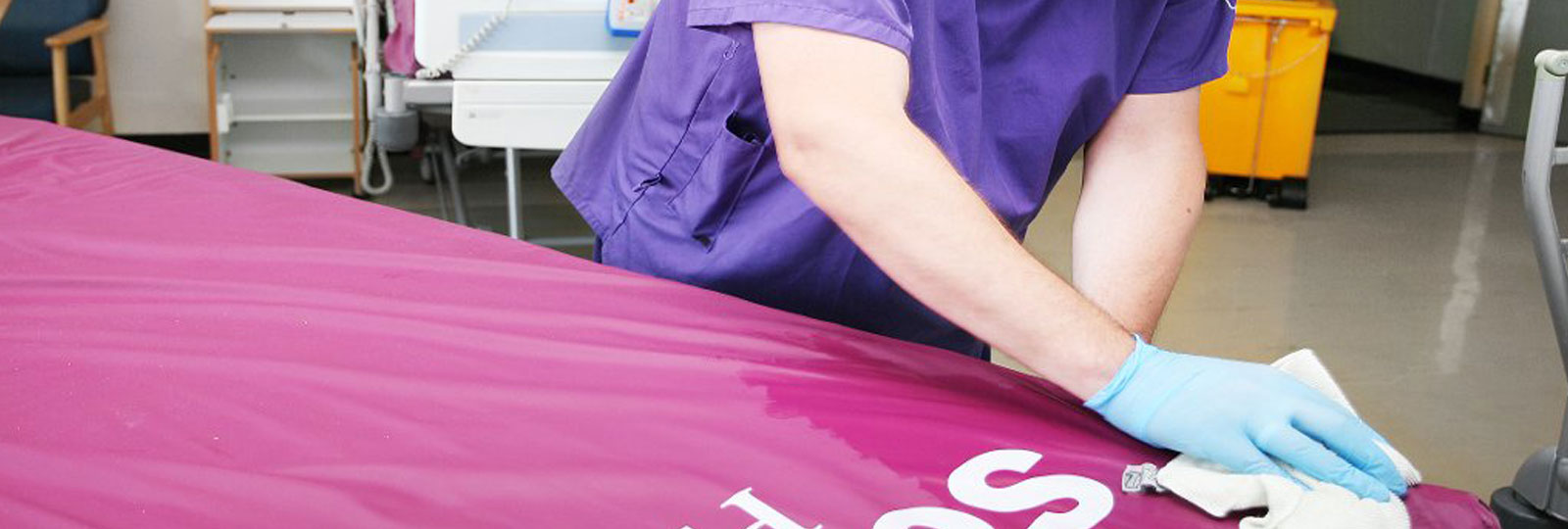
Environmental cleaning and disinfection are crucial to the prevention and control of infection within hospital and healthcare facilities. Pathogens such as MRSA and norovirus, as well as multi-drug resistant organisms, can easily be shed from infected or colonised patients – and it is possible for them to survive on dry surfaces for hours, days, or even months at a time.
Research shows that contaminated surfaces play an important role in the person-to-person transmission of these pathogens. The degree of patient-to-patient transmission has in fact been found to be directly proportional to the level of environmental contamination.
While manual cleaning is a key step in infection prevention and control, there is the risk of the disinfectant solution being contaminated with the pathogen during the cleaning process and then being spread to clean services.
So how do you eliminate the risk of infection spreading and ensure a safe environment for patients?
Decontamination for infection control
Decontamination is a series of processes that effectively remove or destroy infectious agents or other contaminants (e.g. organic matter) in order to prevent the spread of infection.
The three processes are:
- Cleaning
- Enhanced cleaning
- Disinfection
Cleaning
The first stage of decontamination is cleaning – or in other words, the physical removal of dirt, dust and soil from surfaces. In most healthcare environments this process will be performed daily and will usually involve a combination of water, detergent, cloths and mops.
Cleaning may be either manual or automated.
How successful the cleaning is in terms of reducing microbial contamination depends on various factors including:
- The effectiveness of the cleaning process
- The amount of bioburden (soil) present
The cleaning process is generally suitable for items that are not in direct contact with the patient and medical equipment that are in contact with the patient’s skin.
This process will remove organic matter on which infectious agents thrive but will not completely eliminate microorganisms from environmental surfaces.
Enhanced cleaning
Enhanced cleaning refers to methods used in addition to standard cleaning, and is carried out in response to a specific infection prevention and control requirement.
This process may involve increased frequency of cleaning, either for all surfaces or of those that are frequently touched, or it may involve the use of additional cleaning equipment or disinfectants.
It is routinely undertaken at the point where a patient who has been known to be infected with a pathogenic microorganism is discharged or transferred.
In the case of an outbreak of norovirus or diarrhoea, enhanced cleaning may be required for entire wards.
Disinfection
Manual disinfection can help to reduce the number of viable infectious agents in the healthcare environment, but it isn’t always sufficient on its own to inactive certain microbes, such as viruses and spores.
In some cases, the use of a specific concentration of a chemical agent may be required. For example, for blood and bodily fluid spillages, infected areas are usually disinfected using freshly prepared hypochlorite solution.
The use of specialist automated technologies
The addition of enhanced cleaning and chemical disinfection has been proven to be very successful in reducing the spread of infection.
However, research has also shown that when disinfection is undertaken manually, it is only ever partially effective – only 50% of hospital ward surfaces are adequately decontaminated with the use of chemical disinfection.
The issue is that manual cleaning and disinfection relies on the operator to consistently ensure adequate selection, formulation, distribution time and contact time of the agents used.
Specialist automated technologies, such as the use of hydrogen peroxide vapour or ultraviolet light, can play a vital role in supporting the efficacy of manual cleaning practices. These technologies can never replace manual cleaning, as this needs to be undertaken first to remove any soil, but they provide a highly effective and robust supplement to manual cleaning.
The cleanliness of hospital and healthcare facilities is vital in the provision of safe care to patients. Best practice infection control will involve cleaning, enhanced cleaning, and disinfection, along with the use of specialist automated technologies. This four-pronged approach is the most effective way to protect patients and healthcare staff from the spread of infection.





